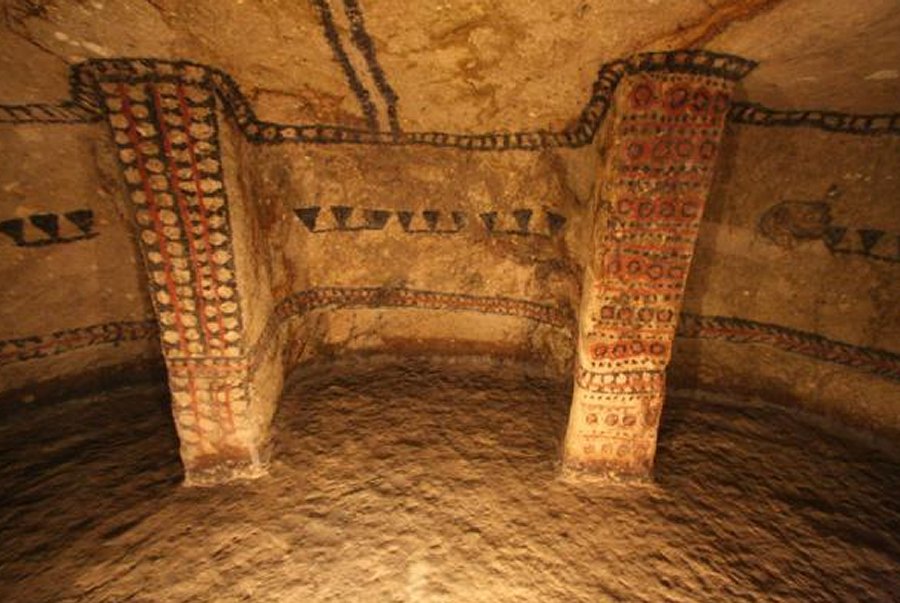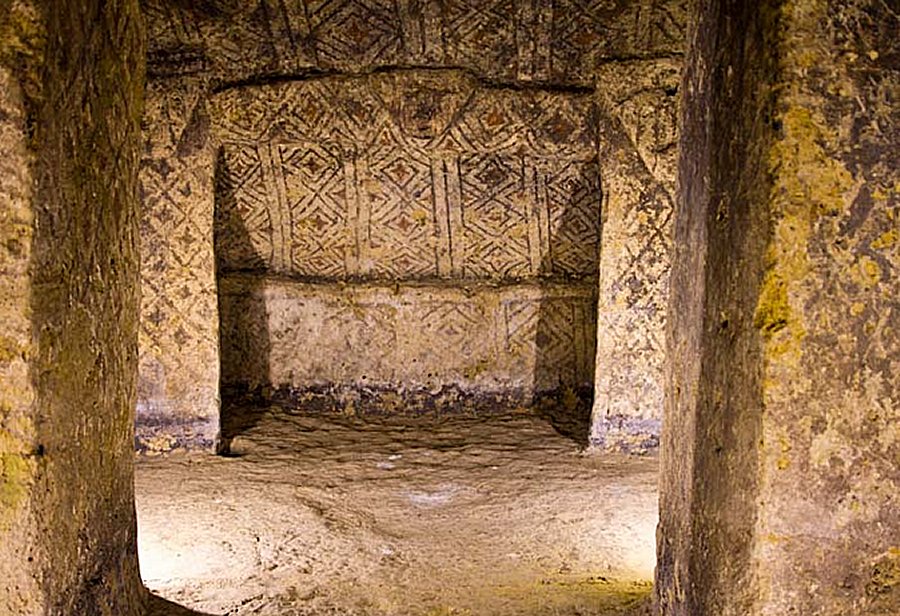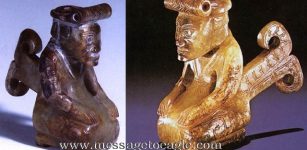Pre-Columbian Huge Underground Tombs Of Tierradentro, Colombia
MessageToEagle.com – One of the most representative archaeological places of Colombia is Tierradentro, the National Archaeological Park located in the municipality of Inzá, Department of Cauca, Colombia.
The area holds the largest concentration of pre-Columbian monumental shaft tombs with side chambers – known as hypogea – which were carved in the volcanic tuff below hilltops and mountain ridges.

Several tombs and hypogea of unique characteristics have endured for centuries. The most elaborate structures along with stone sculptures of deities, some measuring up to 12 m wide and 7 m deep, were made from 600 to 900 AD.
The typical hypogeum has an entry oriented towards the west, a spiral staircase and a main chamber, usually 5 to 8 meters below the surface, with several lesser chambers around, each one containing a corpse.
The pre-Columbian culture that created this funeral complex inhabited this area during the first millennium A.C.

As we know, there are underground tombs with side chambers have been found over the whole of America, from Mexico to north-western Argentina, but their largest concentration is in Colombia.
It is not only the number and concentration of the tombs at Tierradentro, which make this place unique but the features of the tombs.The walls are painted with geometric, anthropomorphic and zoomorphic patterns in red, black and white.

The hypogea, which are unique in America, are composed a vertical shaft, helicoidal stairs, entrance hall and side chamber with central and surrounding columns on a large oval floor-plan, and in particular, carved anthropomorphic representations and polychrome paintings.
Their uniqueness lies in their large size and the staircases which in some cases gives access to a hall.

The vaulted ceilings, walls and columns of the burial chambers are often decorated with geometric zoomorphic and anthropomorphic linear designs, painted in red and black mineral pigments on a white background.
The smaller hypogea vary from 2.5 m to 7 m in depth, with oval floors 2.5-3 m wide, while the chambers of the largest examples may be 10-12 m wide. Most impressive of the latter are those with two or three free-standing central columns and several decorated pilasters along the walls with niches between them.
The site was listed on the World Monuments Fund’s 2012 World Monuments Watch list of 100 Most Endangered Sites.
MessageToEagle.com via AncientPages.com










